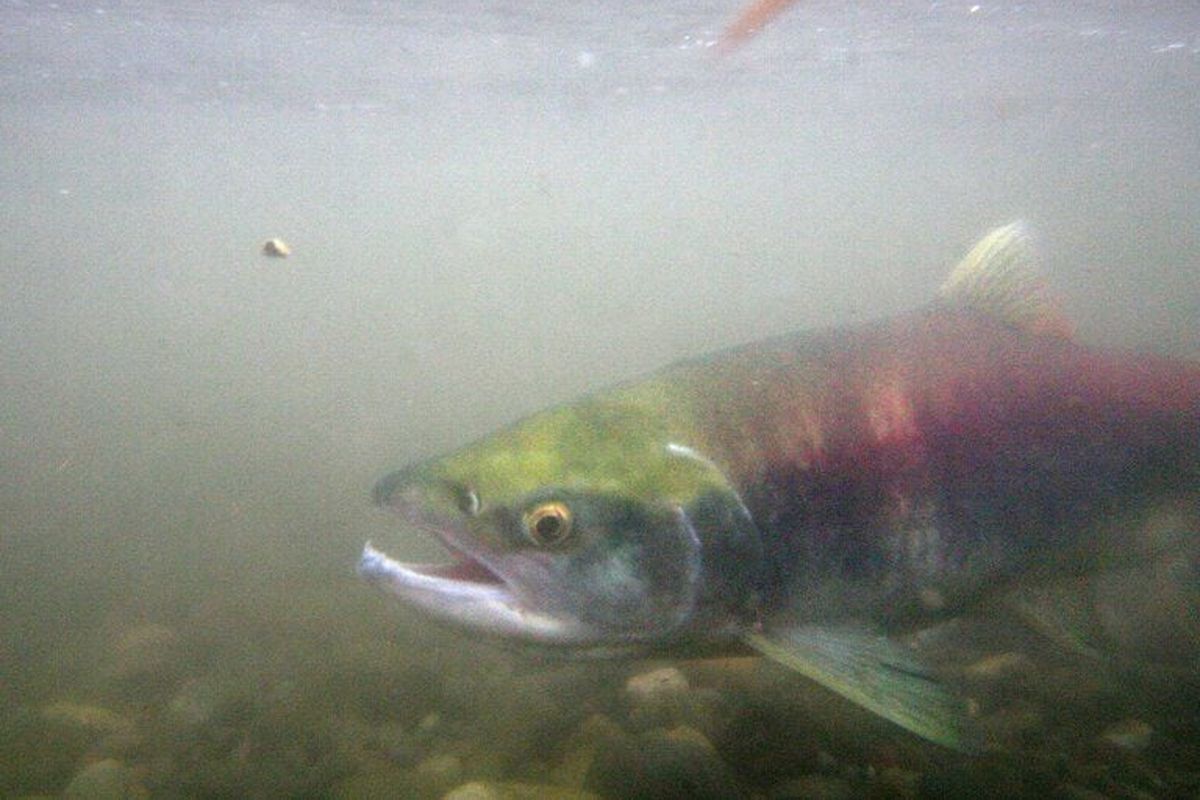Salmon forecasts show promise along with challenges

Newly released salmon forecasts show some encouraging signs of progress in 2022 for Washington populations badly in need of recovery.
Some runs won’t be as plentiful, but greatly improved ocean conditions mean the numbers could be better for fish set to return over the next two to three years. Many salmon runs remain well below 10-year averages and Yakima Basin Fish and Wildlife Board executive director Alex Conley and Yakama Nation Fisheries data manager Bill Bosch said despite some great progress in terms of habitat restoration, it’s difficult to mitigate challenging climate conditions.
“We’ve had some tough ocean years,” Yakima Basin Fish and Wildlife Board executive director Alex Conley said. “We’ve had some tough migration years for both adults and smolts in the Columbia and the Yakima.”
He’ll be keeping an especially close eye on the struggling populations of spring chinook and summer steelhead, the outgoing rainbow trout that are included in the state’s salmon forecasts. Returns from 2021 showed the lowest steelhead returns to the Columbia and Snake River on record, according to the Washington Department of Fish and Wildlife’s Marisa Litz.
The agency announced its forecasts at last Friday’s kickoff meeting for the North of Falcon process used to determine salmon seasons. Tribal co-managers across the state work together with wildlife department officials to host several public meetings – all via Zoom – before adopting official seasons in April.
Nearly 200,000 spring chinook are expected to come through the Columbia River in 2022, compared to a little more than 150,000 a year ago. The forecast projects almost 100,000 summer steelhead for the Columbia, better than a 40% increase from 2021.
Spring chinook numbers in the Yakima are expected to improve from 2,882 to 4,700. Still, Bosch said that’s a far cry from the run of 23,000 back in 2001, or even the 7,000 that came through in 2017.
“Anything greater than 10,000 is a pretty exciting return,” Bosch said. “Anything above 5,000 would be good.”
There’s reason to believe that could be coming soon, thanks in large part to improving conditions in the ocean, where a harmful warm water area known as “the blob” appears to have dissipated. According to the National Oceanic and Atmospheric Administration’s indicators, this year’s ocean conditions are the second-best since monitoring began two years ago.
Of course, freshwater conditions play a vital role as well, and another winter of average to above-average snowpack should provide benefits for future returns. Since the devastating drought of the 2014-15 winter, Bosch said river conditions have stayed relatively good for outgoing young salmon and steelhead, or smolts.
More challenges can await the fish on their return, especially with droughts and rising temperatures caused by climate change. Last summer’s recordbreaking Pacific Northwest heat wave created an early thermal barrier to the Yakima River, limiting the summer sockeye run to less than 100 fish, according to Yakama Nation Fisheries biologist Andrew Matala.
He said when the water’s too warm for sockeye to journey up the Yakima River and eventually be transported to their spawning grounds at Cle Elum Lake, they often just wait for the river to cool or go spawn in other tributaries. Disruptions to that normal timing can have severe consequences for salmon seeking to complete their life cycles by laying eggs in small holes they dig, known as redds.
“The other thing that happens is they perish,” Matala said. “They run out of energy reserves that are supposed to be dedicated to going upstream and digging redds in their spawning grounds.”
Similar to the spring chinook forecasts, the wildlife department projects a run of nearly 200,000 sockeye, up from not quite 152,000. Matala said it’s virtually impossible to accurately predict the number of fish destined for the Yakima River, since they’re genetically identical to the Okanogan and Wenatchee stocks.
Fall chinook returns don’t look as promising a year after the actual return of 239,300 “upriver bright” fish returning to areas of the Columbia River above the Bonneville Dam fell about 115,000 shy of the forecast. This year’s projection’s even lower at 230,000, well below the 10-year average.
Coho forecasts for the Columbia show a different story, up more than 150,000 from last year’s return to nearly one million. That would be double the 10-year average and the largest run since 2014, although still far less than the numbers seen just two decades ago.
Despite this year’s good news and promising future prospects for the short-term, Bosch cautioned variability could be significant if conditions change. Droughts in the mountains and more El Nino years to warm ocean temperatures could be difficult to mitigate as the state and tribes work to create more opportunities for fish and for fishing.
The final speaker at last week’s meeting, WDFW habitat program director Margen Carlson, warned that rising freshwater temperatures and Washington’s increasing population, among other factors, mean it will take more resources and a fundamentally different approach to truly change the trajectory of salmon recovery. Department director Kelly Susewind said until then, Washingtonians can expect restraints on fishing in the state.
“The reality is we’ll turn fishing around when we turn recovery around,” Susewind said at the meeting. “We will continue to carve out any opportunity we can. We have to put conservation first.”